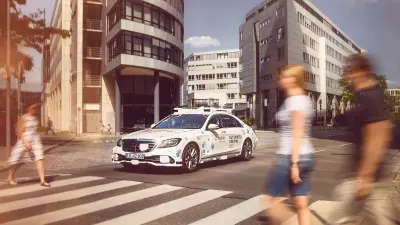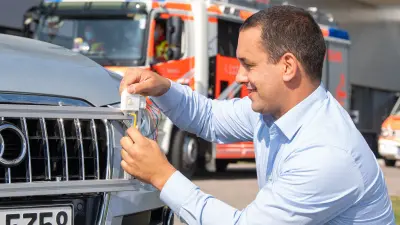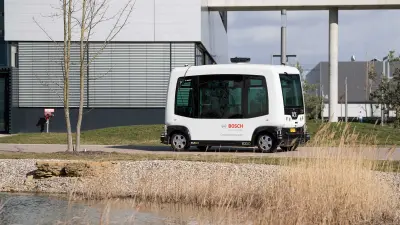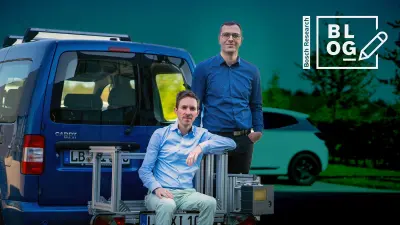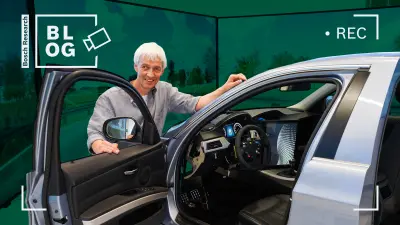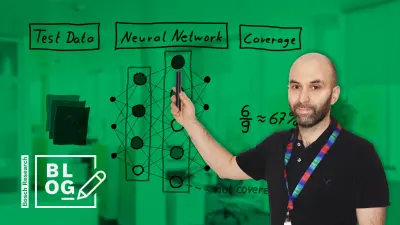The way to fully automated mobility
Automated driving is a cornerstone for future mobility systems — Bosch Research develops the necessary technologies to make these systems reliable, safe, and sustainable.
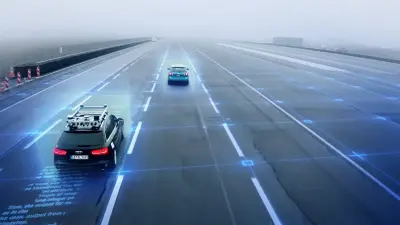
The invention of the automobile completely transformed our world. Now, we find ourselves at the cusp of the next technological revolution: automated driving. In the future, intelligent software and powerful hardware will allow vehicles to transport passengers or goods safely to their destination without any intervention on the part of the driver. This offers a whole host of advantages, not least that self-driving cars will render the dreaded stop-and-go traffic a thing of the past. Furthermore, passenger cars are gradually turning into mobile offices and living rooms. Driverless transport systems make logistics processes more efficient, right down to the final delivery to the end customer. And finally, with intelligent route planning as well as integrated traffic and consumption control, automated driving as an overall concept can play a significant role in making mobility more sustainable and environmentally friendly.
Sense, Think, Act — the cornerstones of automated driving
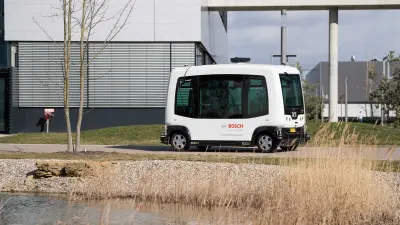
As an innovation leader, Bosch laid the foundation for automated driving at an advanced stage, specifically with its driver assistance and corresponding surround sensing systems. We at Bosch Research are now working on technological solutions for all levels of automated driving. These range from assistance systems that initially offer only partial support to the driver (level 1) to semi-automated driving in which the car can drive itself under very specific conditions (level 3) and, finally, to fully automated driving in which the vehicle technology can independently manage all possible traffic situations (level 5). In all cases, the cardinal rule is that automated driving must not only be efficient but also completely safe.
To achieve this, three fundamental requirements must be met: the car must identify and remain fully aware of the complete vehicle environment (“Sense”), must be able to plan a driving strategy on this basis (“Think”) and consequently implement this strategy with maximum safety (“Act”). Bosch Research is addressing all three aspects in equal measure.
The researchers are already employing test procedures across all levels of automated driving. As well as putting the technologies developed by Bosch Research to the test, the aim is also to work with other relevant parties and bodies to devise standards for testing, approval and quality assurance procedures specifically for the area of automated driving. In addition, the standardized regulations must be incorporated from as early as the design phase.
Sense. Think. Act.
Sense
With a multitude of sensors and connected services, Bosch enables automated vehicles to perceive their environment — just as we do with our eyes and other senses. To this end, the researchers tackling the “sense” area are working tirelessly to improve this automated perception along with the associated mapping and localization of objects. In this regard, it is not just the technology that records the various data but also the correct interpretation of this data that will provide us with a crucial competitive edge. The technology deployed must be able to produce a clear and consistent image from many different sources and modalities (sensor fusion).
Think
The brain of the vehicle is formed by the high-performance vehicle computers, which boast intelligent software combined with powerful hardware. Based on the gigantic volumes of data from the various surround sensors and connected services, the vehicle must plan the correct behavior, calculate the optimum driving strategy and make reliable prognoses to enable safe and predictive driving — and all this must happen in real time. Such complex decision-making soon pushes traditional methods such as decision trees or if-then rules to their limits. These must therefore be supplemented and optimized with new, AI-based procedures. Among other things, Bosch Research is developing algorithms that allow vehicles to choose the right movements at the right time (trajectory).
Act
The powertrain, brakes and steering are the muscles of the self-driving car. Similarly to how the brain controls the muscles via the nervous system, the vehicle computer transfers signals to the various parts of the car, which then ensure reliable execution of the driving strategy. One of the main areas of research is computing: is the computation performed centrally or on a distributed basis? Are new architectures required? Then there is the question of how algorithms can be used to improve the interplay between the captured data and the vehicle mechanics: how is movement translated into longitudinal and lateral steering control? How can the steering system and brakes work together more efficiently? How can we optimize the arbitration for safe automated driving?
Universal process approach
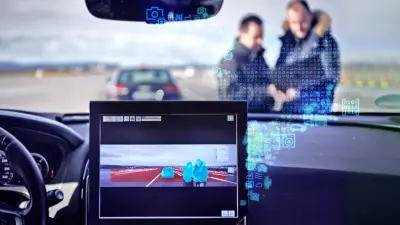
Digitalization and artificial intelligence (AI) play a crucial role in all levels of automated driving. Consequently, the work conducted by Bosch Research encompasses everything from deep learning procedures for multimodal scene understanding and real-time solving of decision problems to the creation of large virtual worlds and new validation methods.
Bosch Research serves as a central point of contact, which investigates and explores these products, systems and components of the future for all our business divisions. As part of one of Germany’s largest automotive suppliers, Bosch Research is in the unique position of being able to access the complete range of functions for automated driving. With all the main elements — from the sensors to the brakes — manufactured in-house, we can tap into the company’s combined wealth of expertise with maximum efficiency. We also play an important role in the research community. The experts at Bosch Research work closely with universities, research institutes and other companies in order to make the mobility of tomorrow a reality.



